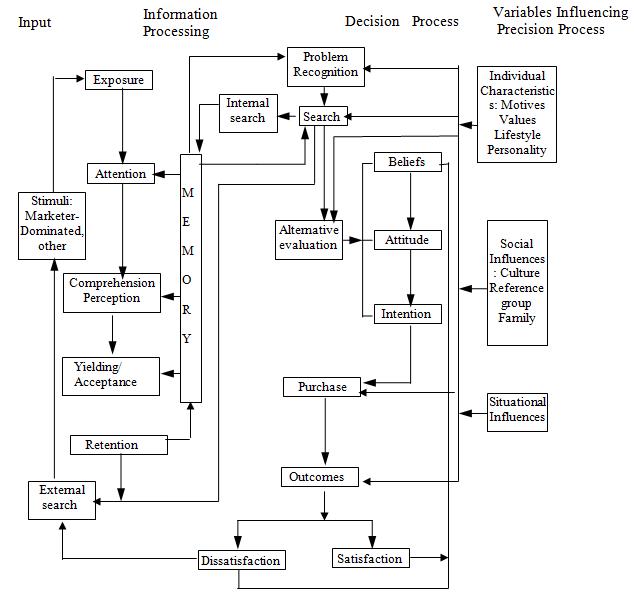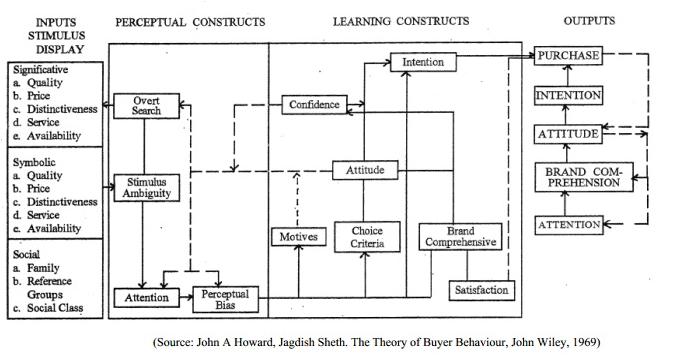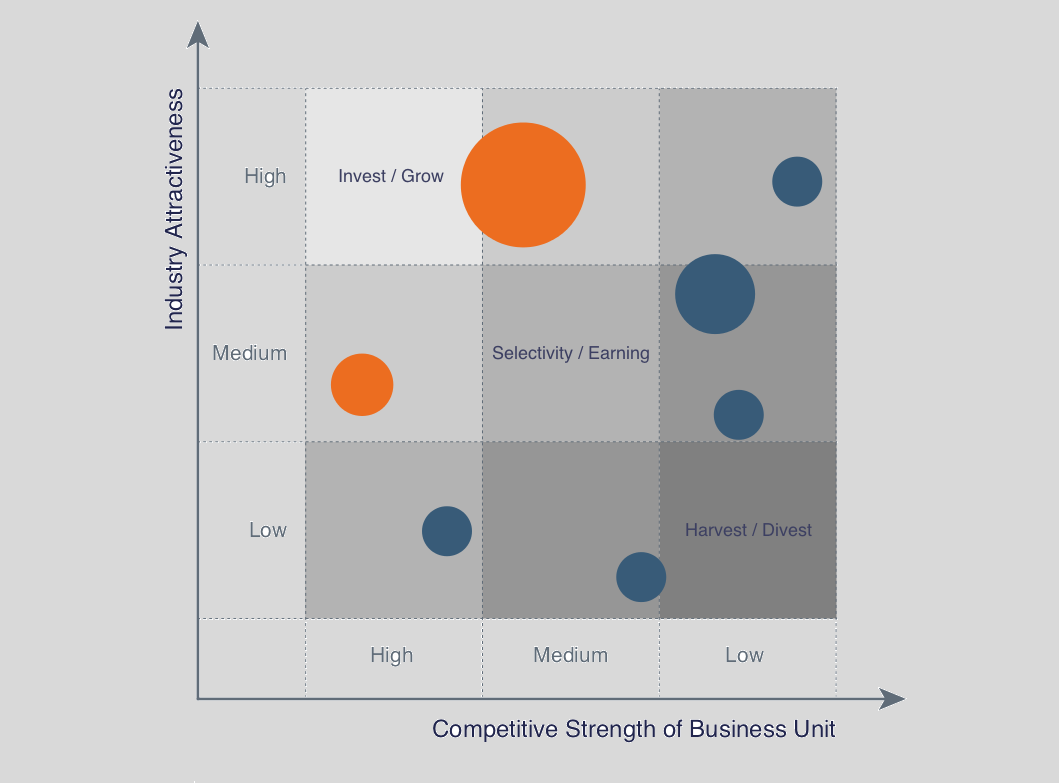The Engel Kollat Blackwell Model of Consumer Behavior was created to describe the increasing, fast-growing body of knowledge concerning consumer behavior. This model, like in other models, has gone through many revisions to improve its descriptive ability of the basic relationships between components and sub-components.
The Engel Kollat Blackwell Model of Consumer Behavior or consists of four distinct stages;
- Information Input Stage: At this stage the consumer gets information from marketing and non-marketing sources, which also influence the problem recognition stage of the decision-making process. If the consumer still does not arrive to a specific decision, the search for external information will be activated in order to arrive to a choice or in some cases if the consumer experience dissonance because the selected alternative is less satisfactory than expected.



